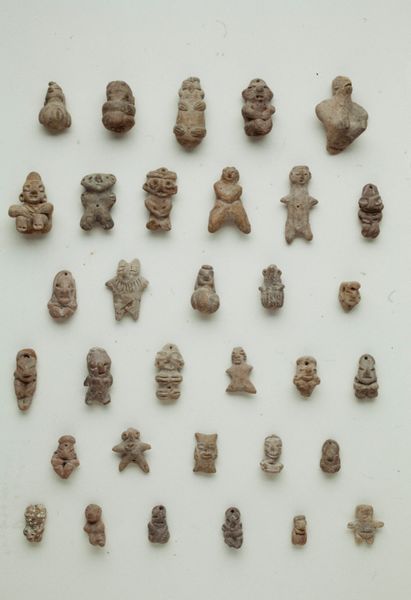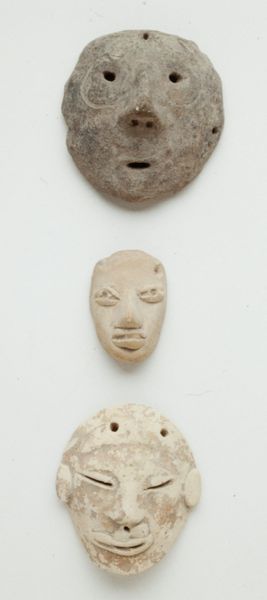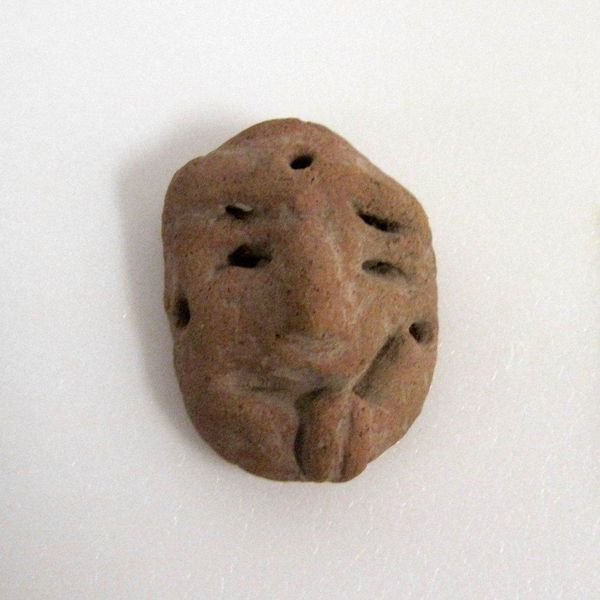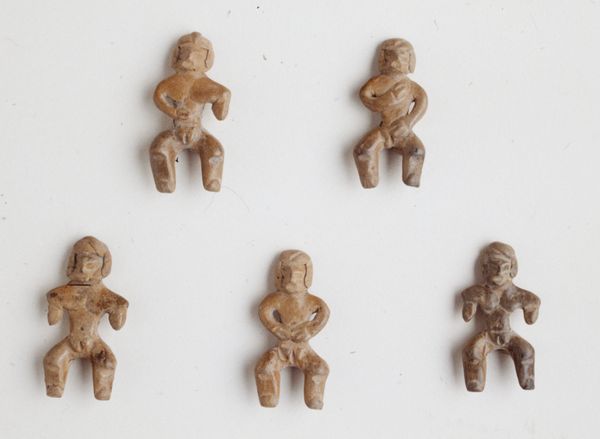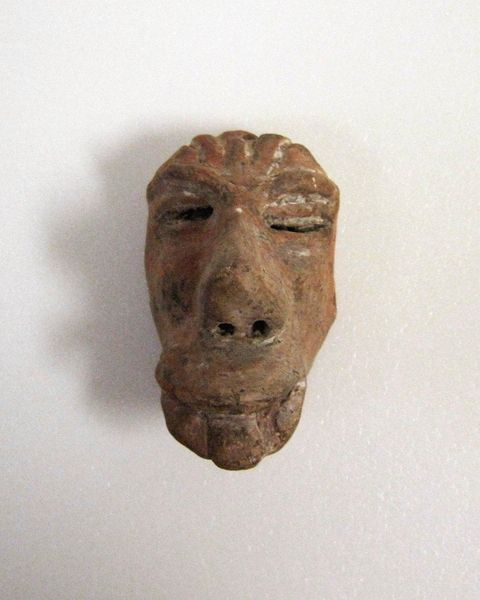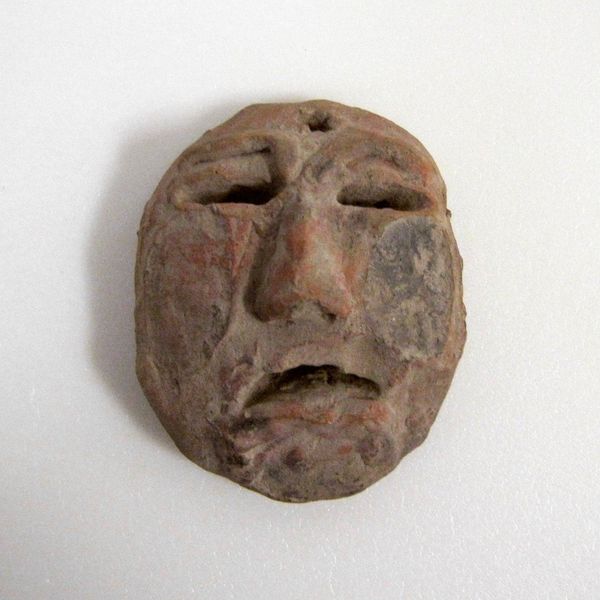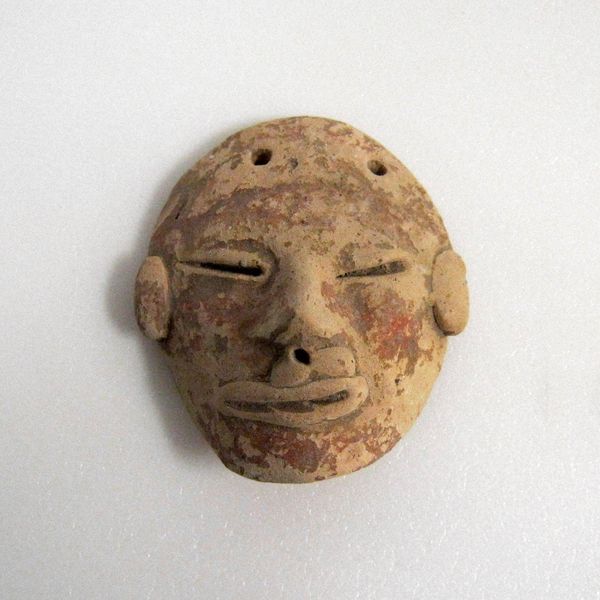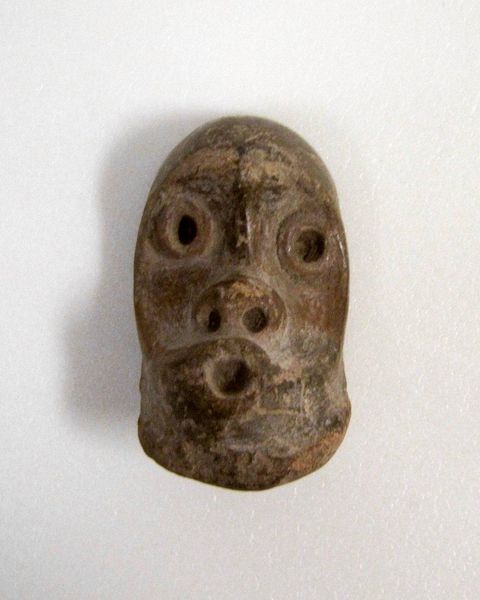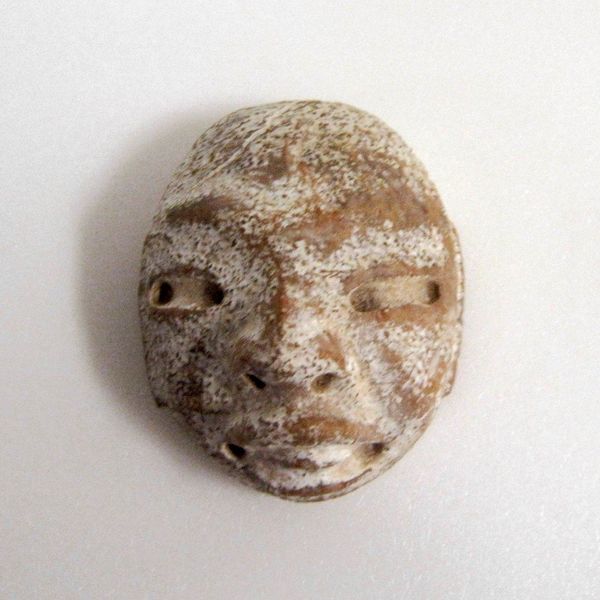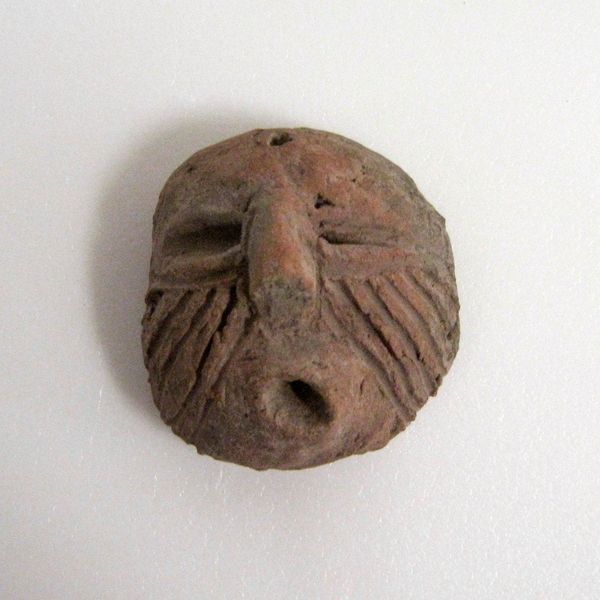
ceramic, earthenware, sculpture, terracotta
#
sculpture
#
ceramic
#
figuration
#
earthenware
#
sculpture
#
terracotta
#
miniature
#
indigenous-americas
Copyright: Public Domain
Curator: Take a look at these incredible ceramic miniatures, likely crafted around the year 1500 by the Tlatilco people. The Minneapolis Institute of Art holds these remarkable portraits within its collection. Editor: My initial impression is one of diverse expressions, rendered at a truly intimate scale. Some evoke humor, while others convey what feels like a deep solemnity, don't you think? Curator: Precisely. These are no mere trifles, but rather sophisticated arrangements of line and volume. Observe, for instance, the strategic use of incised lines to define the planes of the faces and denote specific features. Editor: Knowing the context is key here. The Tlatilco were a civilization contemporaneous with the Olmecs in the Valley of Mexico, correct? These miniatures served a ritual purpose, often found in burial sites? Curator: Indeed. Their presence in burial contexts suggests that they played a crucial role in funerary rituals or beliefs about the afterlife. Consider the symbolism: perhaps they represented ancestors, deities, or even aspects of the deceased themselves. The choice of earthenware— humble, readily available material—also offers symbolic potential relating to the earth and rebirth. Editor: What strikes me is the variety in style. There seems a clear move beyond mere likeness towards capturing emotion. They possess such immediacy—making one consider the socio-political forces that might have led to the commissioning of works of this kind, and how our understanding shapes its modern-day appeal. Curator: Agreed, each tiny plane of the composition reveals individual character. Consider how effectively simple changes to the angles of the brows or the curvature of the lips can project drastically different feelings. Editor: Examining these miniature masks through both the lenses of form and history gives us a fuller sense of their role and allows us to understand their enduring human qualities. Curator: Ultimately, the artistic expression behind these miniatures serves as a strong means for us to think critically about human connection to artistic and social past.
Comments
No comments
Be the first to comment and join the conversation on the ultimate creative platform.
